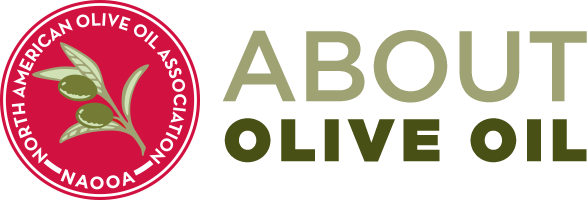Olive oil and extra virgin olive oil are called for in many recipes that call for high temperature oven settings. Is it safe? The answer is yes. Read more to learn why.
The smoke point of extra virgin olive oil is between 350⁰ - 410⁰ F. Regular olive oil and light-tasting olive oil have a smoke point range 390⁰ - 470⁰ F. So how is it that you can cook foods at excess of those temperatures?
The answer is two fold. First, consider the physics of cooking--and common sense. Everything you cook in olive oil contains water. For that reason, when baking or roasting in a very hot oven, the food never gets as hot as the oven unless you really burn it. Consider a pizza baked in 500⁰ F degree oven. The water in pizza dough, cheese and sauce keeps the temperature of the pizza well below that. As the pizza cooks, the water evaporates and the pizza crust becomes crisp. After the water has completely evaporated, however, the temperature of the food will rise rapidly. That is why if you leave the pizza in the oven too long, it will burn and become inedible.
The same goes for grilling. Many grill marinade recipes call for olive oil. Even Weber, the leader in grills, recommends olive oil in their recipes. It is safe to grill foods coated in olive oil or marinated in olive oil because the water in the food, and the relatively cold temperature of the food, moderate the overall temperature. (Flareups will occur when fat drips onto the flames, so make sure that your marinated food is not dripping with oil when grilling. Also, apply the oil to the food, not the grill.)
Sautéing: When we sautee at home, we usually turn the heat all the way up, but its actually considered to be a form or medium-temperature cooking. The oil and the contents of the pan generally do not exceed 320⁰ F. And the constant stirring also reduces the amount of heat building up in the food. It is very unlikely that you will burn your food or the oil while sautéing. Just be careful, as you would with any oil, not to preheat the oil for too long before adding your food.
When deep frying, the oil is heated to around 325⁰ - 375⁰ F, which is under olive oil's smoke point. When you add the food, however, the temperature plummets. The oil will slowly rise in temperature, and once it is back at its original temperature, the food will be done.
The below video demonstrates how you will not exceed the smoke point of olive oil when cooking at high temperatures.
The other reason is more technical: smoke point is not in itself a reliable indicator of cooking oil stability. An oil’s smoke point does not correlate to its performance and stability when heated. Instead, what matters most are the percentage of polyunsaturated fats (the lower the better), the extent to which the oil has been refined (the less the better), and the presence of antioxidants. Extra virgin olive oil, which has a low concentration of polyunsaturated fat, with naturally occurring antioxidants, and is not refined at all, proved the safest and most stable oil for cooking when compared to other cooking oils, regardless of their "smoke points."
Further Reading:
- Smoke Point Is Not a Reliable Indicator of Cooking Oil Stability
- Why Olive Oil is the Best Oil for Frying
- The Culinary Institute of America Clarifies Guidance on Cooking With Olive Oil
- Olive Oil Retains Health Benefits During Cooking
- USDA Recommends Olive Oil for Deep Frying
- US News reports on olive oil smoke points
